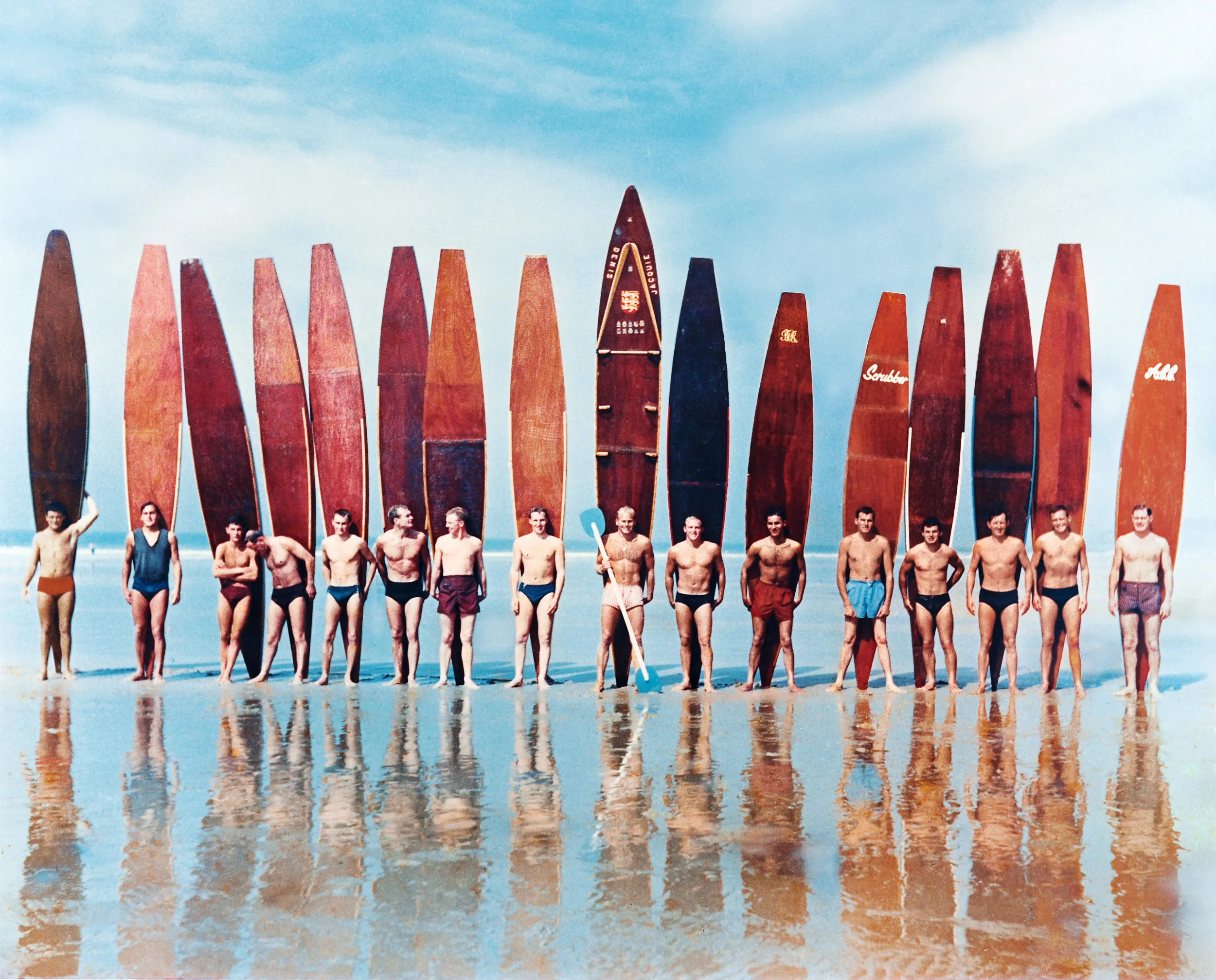It’s no secret that a surfboard can make all the difference in surfing. But with so many options available on the market, it can be tough to know which is right for you – especially if you’re a beginner.
A surfboard’s maneuverability is largely influenced by its length, width, volume, and fin setup. Ideally, a surfboard should be stable in the waves and comfortable maneuvering in the water. Find here some custom surfboards ideal for beginners to suit individual needs.
To help you decide which type of board is best for you, we’ve put together this guide outlining the main features of each type. So whether you’re looking for something specific or want to start surfing safely and effectively, you should be aware of different surfboards.
Types Of Surfboards
When it comes to surfing, there are many different types of boards that surfers can choose from. In spite of this, finding the right surfboard size is one of the most critical things for a beginner.
Here are some of the most common types of surfboards and their corresponding sizes:
1. Shortboard

This type of board is perfect for surfers who want something easy to learn. It’s shorter than a longboard and has smaller fins and rails, making it easier to maneuver in shallow water. They’re fast and maneuverable, making them ideal for experienced surfers who want to ride in small waves.
However, they can be challenging to control in giant waves. The shortboard size varies between 5’10” to 6’8″.
2. Longboard
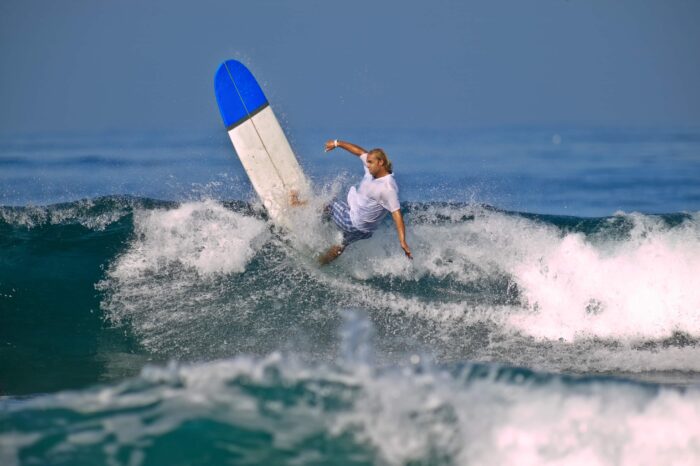
A longboard is ideal for surfers who want more stability while surfing. Its length makes it better suited for larger waves and choppy waters. This makes them a good choice to catch bigger waves.
They’re not as fast as shortboards but easier to turn. The longboard size varies between 9′ 2” to 10′ 0”’.
3. The Fish

The fish is a specialized type of board explicitly designed for wave riding. Its unique shape helps riders stay stable when riding big waves at high speeds.
They’re also designed for speed and maneuverability in small waves. The fish board size varies between 5’6″ to 6’4″.
4. The Funboard
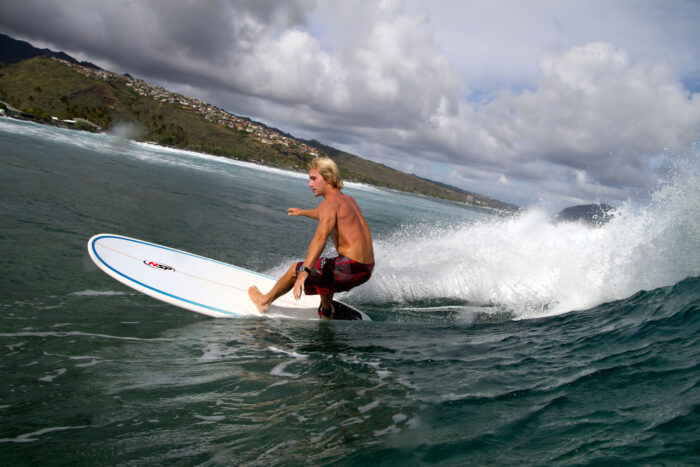
The funboard is a hybrid between a shortboard and a longboard. These are perfect for those who want something between the two options. It’s shorter than either type but broader than a standard shortboard, making it easier to ride in smaller waves or choppier conditions. The funboard size varies between 7’0″ to 7’10”.
As you are now aware of different surfboards, you must consider a few factors to choose a surfboard.
What Are The Factors To Consider While Choosing A Surfboard for Beginners?
There is no one-size-fits-all answer to this question, as the best surfboard size for beginners depends on various factors, including height and weight. That being said, some general guidelines can help you choose the right board.
Height And Weight
When it comes to choosing the best surfboard size for beginners, there are a lot of factors to consider. For example, your height and weight will determine the right board.
Many beginners make the mistake of thinking they should get a board that’s as big as possible. However, this isn’t always the case. The best surfboard size for beginners depends on various factors, including height and weight.
If you’re on the taller side, you may want to consider a longer board. Conversely, a shorter board may be better for you if you have a short height.
Another factor to consider is weight. Heavier surfers will need a sturdier board to support their weight, while lighter surfers may want a more lightweight board for easy maneuverability.
Surfboard Volume
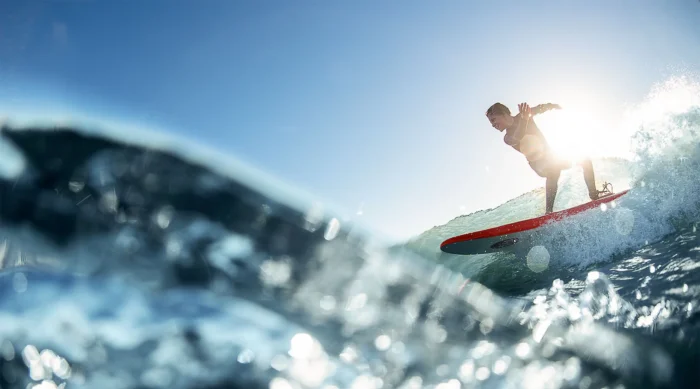
If you’re a beginner surfer, volume is one of the most important factors when choosing a surfboard. Volume is the amount of space a surfboard occupies and directly affects how easily it is to catch waves.
In general, beginners should choose boards with more volume since they’re easier to paddle and get up on. However, it’s also important to consider your weight and height when picking a board.
A heavier or taller person will need a board with more volume than someone smaller and lighter.
Finally, think about your level of experience. If you’re starting surfing, you’ll want to choose a beginner surfboard that is stable and easy to paddle.
Keep these factors in mind when choosing your surfboard, and you’ll be sure to find the perfect one for your needs.
What Should Be The Size Of Surfboard To Get For Beginners?
As a beginner and an adult, you should avoid surfboards that are narrow in shape or shorter in length. These boards don’t provide much stability, making it difficult to paddle and catch waves.
Look for a board that is longer and fuller in shape, with plenty of volumes to float you well. It should also be thicker than average to provide plenty of stability. These boards are easy to catch waves on and will help you develop your surfing skills quickly.
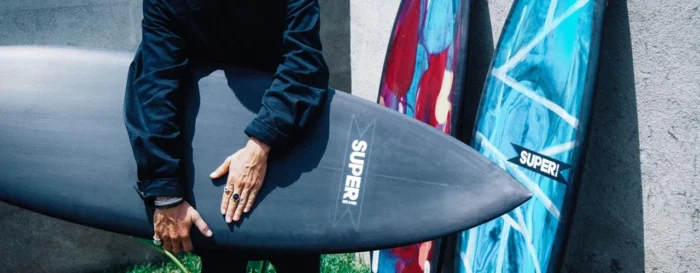
For kids, it’s best to start with a smaller board. This way, if things go wrong or kids make a mistake while surfing – which is bound to happen at some point – it won’t be too difficult to get back onto the board without getting too scared or frustrated.
Plus, smaller boards are usually easier to maneuver than larger ones. So chances are good that kids should start their surfing journey with a small surfboard.
Conclusion
You should consider a few things when choosing the perfect surfboard size for beginners. First, consider your height and weight. A board that resembles these measurements will be more comfortable and easier to ride.
Finally, be sure to find a surfboard that’s easy to carry around – it doesn’t hurt to consider how much storage space you have available in your home or garage.
Once you’ve selected the right-sized surfboard, relax and get ready for some fun in the waves. The most important thing is to have fun and stay safe.

